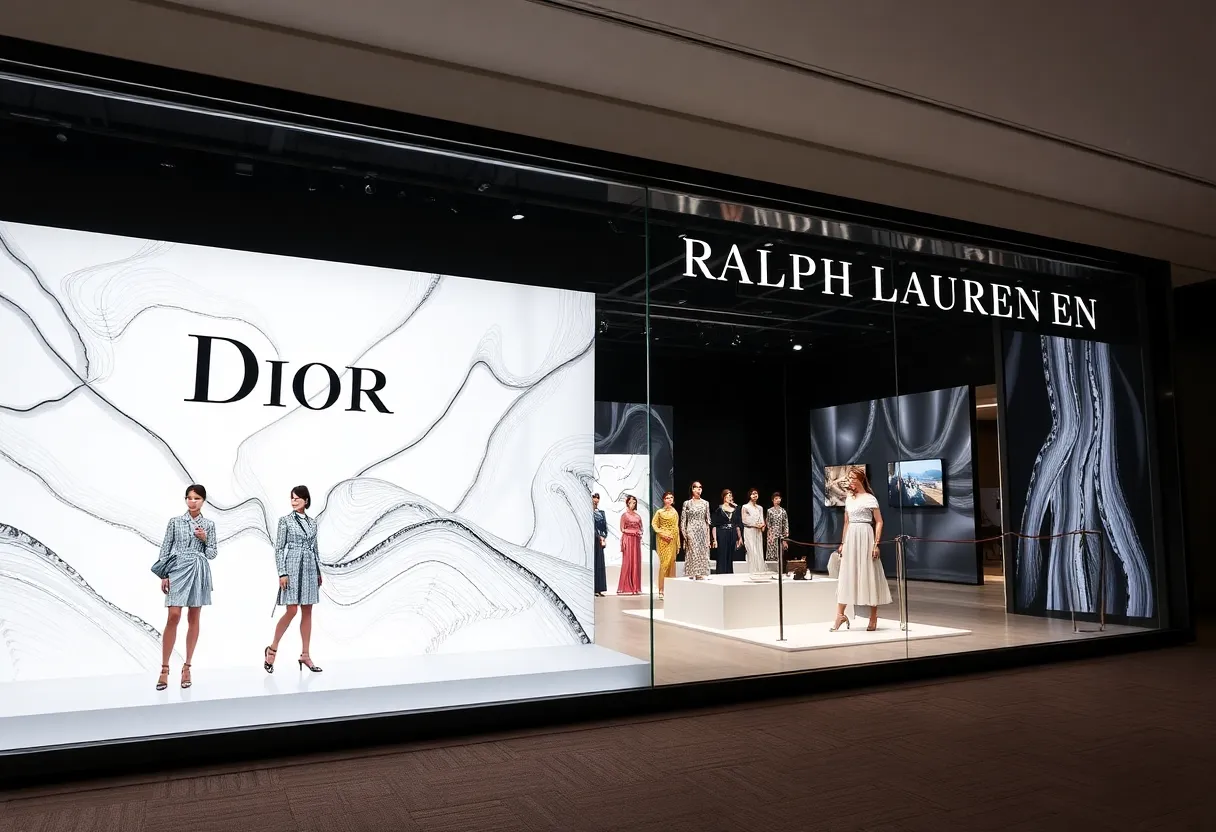News Summary
In 2025, Dior has reclaimed its title as the leader in digital performance among luxury brands, surpassing Louis Vuitton. Simultaneously, Ralph Lauren has made significant strides, entering the top five for the first time. Despite various challenges, including political changes impacting social media, luxury brands like Dior and Ralph Lauren continue to capture consumer interest, emphasizing the importance of meaningful engagement in the evolving digital landscape.
Dior Regains Digital Dominance; Ralph Lauren Soars in Luxury Rankings
In the fast-paced world of luxury fashion, 2025 has brought some exciting shifts. According to the latest Vogue Business Index released in April, Dior has once again claimed the top spot in digital performance, surpassing Louis Vuitton, while Ralph Lauren has made a grand entry into the top five rankings for the first time ever!
Political Changes Shake the Digital Landscape
This year has seen its fair share of political and social media challenges, especially in the United States. The infamous TikTok experienced a ban and subsequent reintroduction on January 19, which happened to coincide with Donald Trump’s renewed presidency. This shake-up hasn’t gone unnoticed, affecting how luxury brands navigate the digital landscape and connect with consumers.
Furthermore, Meta (the parent company of Facebook and Instagram) made significant changes to its policies on January 7. This included removing fact-checking processes, which has led to criticism from House Democrats. These changes have undeniably created a challenging environment for luxury brands looking to maintain their online presence and engagement with users.
Social Media Performance: The New Landscape
The Vogue Business Index evaluates brands based on their performance across various social media channels, both in Western markets and China. Metrics such as followers, shares, views, website traffic, and search volume on Google play a critical role in this evaluation. Despite a tough environment, Dior reclaimed its throne, reaffirming its status as a digital powerhouse. Ralph Lauren’s incredible rise in rank has also pointed to a significant trend shift in luxury branding, with more consumers now showing an inclination towards premium brands amid rising prices.
Rising Trends and Consumer Behavior
Interestingly, 24% of consumers indicated they’re ready to switch to cheaper brands, which has sparked discussions about a potential ‘digital recession’ within luxury. Amid an overall decrease in social media engagement—down 19% on Instagram and 4% on Weibo—Dior, Ralph Lauren, and Tommy Hilfiger stand out as survivors, showcasing their ability to maintain consumer interest. This is crucial since 40% of luxury consumers report discovering brands through social media, with an equal number using it to do their homework before making a purchase.
The Shift to Meaningful Engagement
Today’s luxury brands are being urged to step up their game. Engaging consumers in meaningful ways through entertaining content is more important than ever during these economic slowdowns. Consumers are looking for brands that resonate with templates of quality, value, and innovative design. New contenders have made their entry into the Index too! Ami Paris, Jacquemus, and Maje have slipped into the rankings at 38, 39, and 60 respectively, showcasing the ever-evolving competitive landscape.
Ami Paris, Jacquemus, and Maje: Exploring the Digital Terrain
Ami Paris is tapping into traditional digital strategies with celebrity campaigns celebrating its heritage. Meanwhile, Jacquemus engages consumers using playful and captivating content designed to grab attention on social media. On the flip side, Maje, despite boasting a substantial follower count, is facing challenges in social engagement. To enhance its standing, Maje is encouraged to embrace culturally relevant content that will resonate with its audience.
Notably, the performance differences between these brands highlight varying levels of success on Chinese versus Western social media platforms. Ami Paris and Maje enjoy better brand recognition in China, while Jacquemus has yet to build a similar rapport.
The Star Power Factor
In this space, celebrity influence looms large. Luxury brands are harnessing star power to ramp up visibility and engagement. Prada continues to stay ahead thanks to its cultural endeavors that resonate well with audiences, driving meaningful engagement on social platforms. Miu Miu, too, has seen significant improvement, bolstered by strategic celebrity partnerships and innovative marketing campaigns.
Digital Product Passports: Navigating New Regulations
As brands prepare for upcoming EU regulations, Digital Product Passports (DPPs) are on the horizon, providing luxury items with a digital identity intended to engage customers more effectively. However, brands face hurdles in ensuring consumer awareness and understanding of these new identifiers, coupled with the challenge of making them attractive to potential buyers.
Conclusion: The Road Ahead
As we move further into 2025, the luxury fashion world is set to undergo even more changes. Adapting to technological advancements and shifting consumer behaviors will be pivotal. While challenges abound, exciting opportunities await those brands willing to embrace innovation and connection in the digital space.
Deeper Dive: News & Info About This Topic
HERE Resources
Marketers Lose $200 Billion in Potential Revenue Due to Short-Term Focus
What’s Happening in Website Development Today?
What’s Happening in Website Design Today?
Additional Resources
- Vogue Business: Traditional Digital Marketing Is Going Amiss
- Netguru: Disrupting the Luxury Fashion Market
- Business of Fashion: Millions of Luxury Products Have Digital IDs
- Luxury Daily: Digital Dilemma in Luxury Brands
- Jing Daily: Luxury Giants Rally Behind New Digital Fashion Initiative
- Wikipedia: Luxury Brand
- Google Search: Luxury Fashion
- Google Scholar: Luxury Brands Digital Marketing
- Encyclopedia Britannica: Luxury Brands
- Google News: Luxury Fashion Trends







